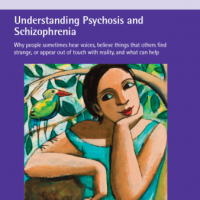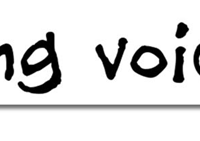David Eaglemann is a neuroscietist who studies perception – how we percieve the world. Here he is on bigthink on synesthesia -mixing of senses.
“a very good inroad into understanding how different brains percieve the world differently”
Published on Jul 29, 2012 by bigthink
“There are many different forms,” says David Eagleman, a neuroscientist known for his ability to garner important insights into the nature of perception and consciousness through idiosyncratic methods. “Essentially, any cross-blending of the senses that you can think of, my colleagues and I have found a case somewhere.”
David Eagleman:
One of the things I study in my lab is called synesthesia, and it represents a blending of the senses. So we’ve all heard the anesthesia, which means no feeling. Synesthesia means joined feeling. So somebody with synesthesia, they might hear music and it causes them to see colors physically, or they might hear something and it puts a taste in their mouth, physically they’re experiencing that, or they might eat something and it puts a feeling on their fingertips. The most common forms of synesthesia have to do with over-learned sequences, like letters or numbers or weekdays or months, triggering a color experience. So somebody might look at the number six and that’s red to that synesthete, or they look at the letter J and that’s purple. And it’s an internal experience, it’s automatic, it’s involuntary and it’s unconscious, and to a synesthete it’s just self-evidently true that J is purple.
It used to be thought this was very rare. The original estimates were 1 in 20,000, but we now know it’s quite common. It’s probably up to 4 percent of the population has some form of synesthesia. There are many different forms. Essentially, any cross-blending of the senses that you can think of, my colleagues and I have found a case somewhere, so we now know it’s very common. And the reason it’s so interesting to me is because it’s a very good inroad into understanding how different brains can be perceive reality differently, so you’re sitting here, your neighbor is sitting here and you’re both looking at the same thing and yet you’re seeing the world very differently.
And it turns out synesthesia is heritable, so my lab is pulling the genes for it right now. And the reason that’s so interesting is because it’s what I’m calling perceptual genomics, which is to say how do little genetic changes change the way we perceive reality. And, of course, most synesthetes, historically, have lived their whole lives and they may even die without ever suspecting that they’re seeing reality differently than someone else because we all accept the reality presented to us. So synesthesia is a really direct way to look at how individual changes can lead to different beliefs about reality.
http://bigthink.com/
Related articles
- Seeing Sounds, Hearing Colors: Good for Survival? (history.com)

































































































I believe solutions to psychosis and altered states of reality will come from lab’s such as the perceptual research Lab of David Eagleman. Psychiatry is so off track as a scientific discipline.
LikeLike
Hi Wendy, good to have you join us here. I’m a big fan of David Eagleman , he’s a real scientist – more excited about discovering what we don’t yet know than protecting reputation of a professions built on false certainty .
LikeLike
Fascinating
LikeLike